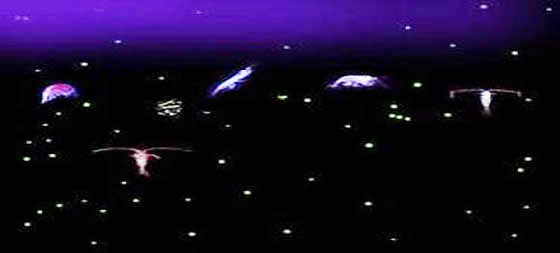
Largemouth Bass Fishing Tactics
A few tactics that may help you catch more largemouth bass are described below.
Follow the Plankton

Plankton
Plankton are microscopic organisms of two types; phytoplankton and zooplankton. Phytoplankton are plants, and convert sunlight into food through photosynthesis. Zooplankton are animals, and eat phytoplankton. Many baitfish feed on zooplankton, as do the fry of larger fish.
The phytoplankton seek light, and therefore are found mostly in the upper part of the water column, near the surface. The zooplankton follow them to the surface. Winds move the surface water and therefore the plankton.
If there has been a steady wind blowing towards the land, the wind moves the surface water and the plankton toward the shore. The plankton stack up against the shore. The baitfish follow. The largemouth bass might be right behind them.
So if there has been a steady wind, try fishing near the shore towards which the wind has been blowing.
Follow the Water Temperature
In the early spring the shallow water near the shore warms up first. Look for the bass there. In the summer the deep water is cooler. Look for the bass there.
Find Some Shade
Bass don't like the bright sun. They will often stay in deep water to avoid the sun. If they can find some shade they will go there. Try under docks. In some small lakes you can find trees along the bank overhanging the water. Look for bass there.
Pick The Best Times
Bass do most of their feeding in the early morning and Late afternoon and evening. If you can, fish for them then.